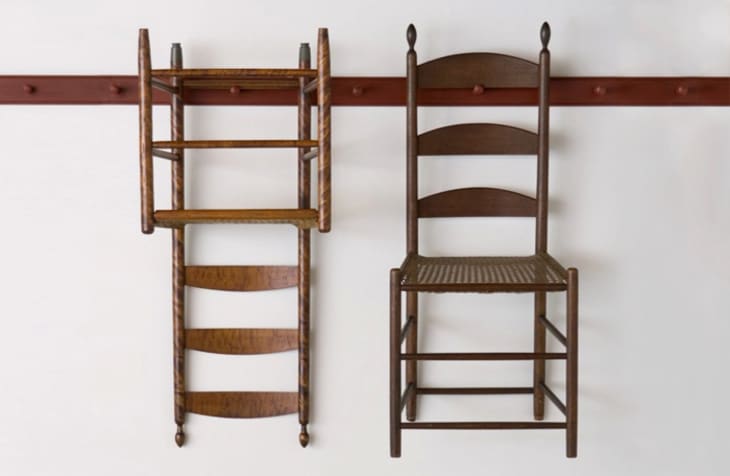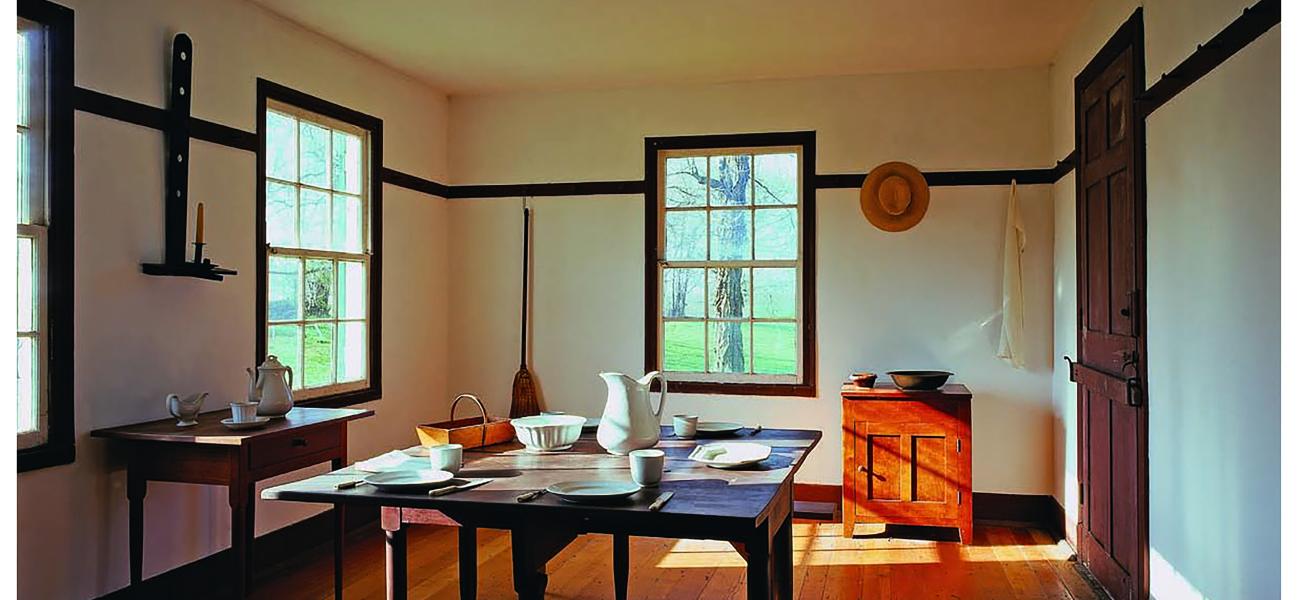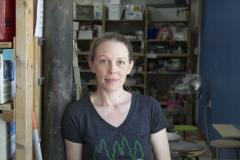The Shakers won’t be remembered for their pottery. History paints them as religious extremists who made nice furniture. When the last light of the two remaining Shakers has been extinguished, the legacy left behind will be of a peaceful aesthetic – museum exhibitions of tranquil, sparse rooms. The furniture they are known for, a mirror of their values as a religious community, is embodied by their dictum: “Hands to work, hearts to God.”
And there is something divine in what they put their hands to. The elegant simplicity of their handcrafted objects is akin to the profound and seemingly uncomplicated beauty of a cloud. They pursued perfection through purity, goodness, equality, kindness. Although historical texts have recorded them as single-minded fanatics with strict unbending ways, they were a people led by love.
 I’d started my Fogelberg residency at Northern Clay Center wanting to make pots that emulated Shaker furniture. Along the way, I grew to admire the Shakers themselves. I liked the reassuring logic of their ladder-backed chairs. The solid straight lines of their kitchen tables. The soothing stillness of their stacking oval boxes. I appreciated the honesty of their humble wooden pegs and pulls. I wanted to create pottery that embodied that same aesthetic and answer the questions, “Why is this captivating and not boring?” and “How can something be simple and intriguing at the same time?” and “What elements give an object the treasured appeal of a family heirloom?” and “Did those same elements survive in the American Shaker knock-offs found in Danish Modern furniture?”
I’d started my Fogelberg residency at Northern Clay Center wanting to make pots that emulated Shaker furniture. Along the way, I grew to admire the Shakers themselves. I liked the reassuring logic of their ladder-backed chairs. The solid straight lines of their kitchen tables. The soothing stillness of their stacking oval boxes. I appreciated the honesty of their humble wooden pegs and pulls. I wanted to create pottery that embodied that same aesthetic and answer the questions, “Why is this captivating and not boring?” and “How can something be simple and intriguing at the same time?” and “What elements give an object the treasured appeal of a family heirloom?” and “Did those same elements survive in the American Shaker knock-offs found in Danish Modern furniture?”
(And yet, something was lost in that translation. Was it the soul of a thing?)
How could I bring this to my pottery? At first, I thought to make larger objects. Much larger. Not a table vase, but a human-sized “vahz” fit for a palatial home. Then, more furniture-scale objects, like stools and coat pegs. But, perhaps in their literalness, these initial ideas missed the essence of what drew me to Shaker furniture in the first place.
In my research I thought I would uncover some timeless Masonic-style principle of design. A Fibonacci sequence for handmade crafts. Sacred proportions. A mathematical formula used in their woodworking that I could translate to clay. Instead, my quest uncovered more about the pursuit of principles on which Shaker communities were founded: equality of all humans (regardless of gender or race), peace, love, kindness, hard work, growing, making, inventing. These too are timeless.
I expected to find The Golden Ratio. Instead I found The Golden Rule.


